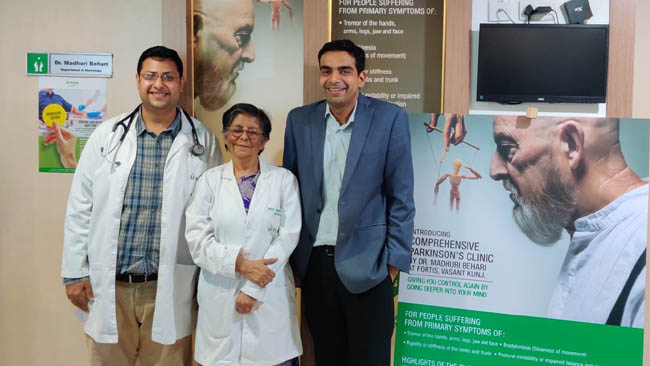
Fortis Hospital Vasant Kunj launched a dedicated unit for Parkinson’s to treat patients suffering from the disease, under the aegis of Dr. Madhuri Behari, Director, Neurology, Fortis Hospital, Vasant Kunj.
The clinic will be open on the second and fourth Friday of every month and will provide a host of services in addition to Deep brain stimulation counselling and benefits. These include physiotherapy, administration of apomorphine (the injection and pump) and counselling services for those suffering from Parkinson’s.
A neurodegenerative disorder, Parkinson’s disease develops slowly, and the symptoms manifest themselves over time. The motor skills of a person get affected as the central nervous system is compromised.
“In the forty years that I have worked as a doctor, I have seen several instances wherein deep brain stimulation has actually helped patients control their motor responses. These patients have rigid muscles, impaired postures, speech - writing defects and problems in controlling their movements. Deep brain stimulation (DBS) is a surgery wherein a device (consisting of electrodes), is implanted deep within the brain and sends electrical signals to those parts of the brain which are responsible for motor responses. It is an important operative option to relieve some of the stress associated with Parkinson’s.” said Dr. Madhuri Behari, Director, Neurology, Fortis Hospital Vasant Kunj, New Delhi
During deep brain stimulation, deep structures in the brain are stimulated with the help of fine wires connected to a pulse generator, which contains a pacemaker. On the first stage leads are placed under the brain by calculating the target on pre-op MRI using a computer workstation.
“Once tentatively placed, the patient performs certain movements as directed by the physician inside the OT. This helps in identifying the correct position for the electrodes. Once the position is adjusted, the patient is put under anesthesia and the wires are tunneled under the skin and connected to a pacemaker which generates the stimulation and is placed on the chest under the skin. The patient is then observed once the electrodes are in place and functioning. In the second stage, over three to six months, the programming of the batteries is adjusted keeping in mind the requirements of the patient. The programming determines the strength of the electrical pulse which reaches the brain from the pacemaker.” Added Dr Anurag Gupta, Senior Consultation at FHVK